Judul : 50 Stylish Cars That Aged Like Fine Wine
link : 50 Stylish Cars That Aged Like Fine Wine
50 Stylish Cars That Aged Like Fine Wine
Every culture and subculture has symbols that can commonly be tied to ideas about quality, style, endurance, and beauty.
One symbol that seems to transcend several boundaries within Western culture is the appreciation of fine craftsmanship when it comes to automobiles. Enthusiasts hail from many walks of life, but they all come together when it’s time to praise various makes and models or debate mechanical pulchritude.
Here are some of the most iconic lines crafted by automotive manufacturers. Through iteration and reinvention, these underlying design concepts have endured, and aged with grace.
50 Stylish Cars That Aged Like Fine Wine
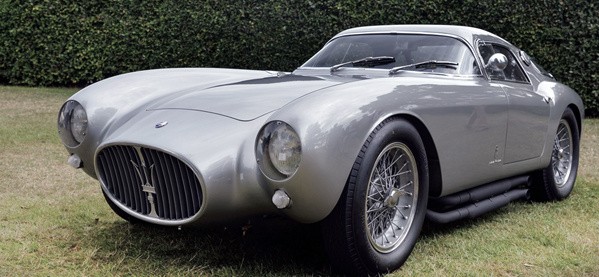
![]()
Made from 1947 to 1956, the A6 offered two choices, both of which were straight-six, a 1.5-litre and a 2.0-litre engine. The model would eventually expand to a twelve 2.0-litre single seater with the help of Cioacchino Colombo and Medardo Fantuzzi producing the A6GCM. It would win the 1953 Italian Grand Prix with driver Guan Manuel Fangio.
2 Years later the A6 would undergo even more changes to take part of the World Sportscar Championship. In 1953 the new A6GCS/53 was released with 170 bhp and only 52 available. The final model would offer just 4 more at 60 total produced, and be sold with 20 less horsepower.

![]()
If a car could be said to give one a toothache, this might be one such. The company responsible for these monuments to automotive decadence and chic style was of Anglo-French descent.
From the diminutive Baby—after which most Pinewood Derby models seem to take—to the long-bonneted sinister sleekness of models produced in the 1930s, these cars seem to hark back to the earliest concepts of automotive grace.
While they have largely become museum pieces, their bodylines are forever paired in our imaginations with early Bond movies and Hitchcock thrillers.
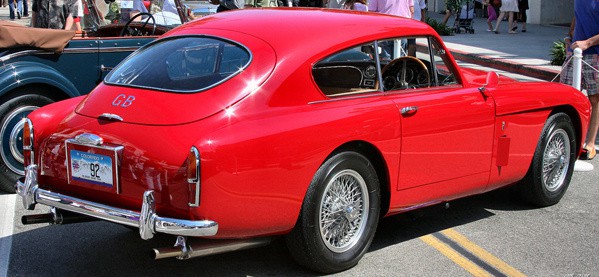
![]()
Produced between 1957 and 1959, this was largely a model that carried over characteristics of style and consistent performance from its precursor in the automotive world, the Lagonda 2.9L, put out by Bentley. The hydraulic clutch was a new measure, but many of the standard fixtures of automotive construction were kept in their unaltered state.
However, perhaps most importantly, this is James Bond’s Aston Martin, as told in Fleming’s novel, Goldfinger. In the film version, he drives a DB5, updated to appear current.
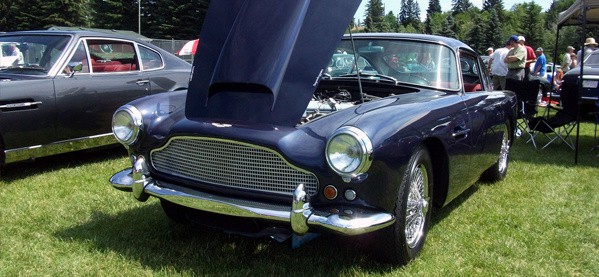
![]()
While this deeply respected British icon has been putting cars on the streets and into movies for many decades, this particular model, unveiled in the early 60s, caused something of a stir in the purist British automotive circles. With a sleek tube design crafted by an Italian automotive artisan, and introduced decidedly un-British forms into the tightly guarded community standards then held in the industry.
It would prove to be a veritable progenitrix for many of Aston Martins’ models over the next several decades—with revolutionary thinking—not simply a single revolutionary form—becoming a standard problem-solving strategy for common design issues or customer demand.
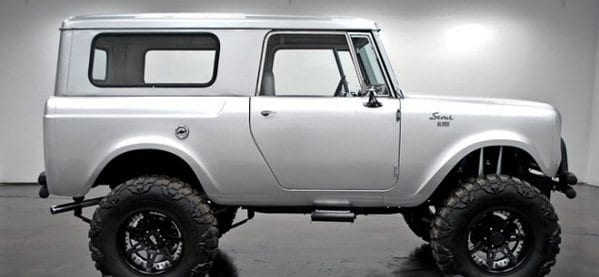
![]()
Born in 1965 as a competitor for Jeep, this precursor to todays SUV’s was rolling units off the assembly line until 1980.
It’s a 4×4 basic design—a workhorse that became a fixture of anyone whose profession took them into rugged terrain. At home on tundra, in the Outback, the great deserts of North America, Asia, or Africa—the Scout became synonymous with adventure, with professions that took us into dangerous places.
Much in the same way that Jeep made its name during the Second World War and ensuing decade, the Scout has become fixed in our imagination of a post-colonial and unstable, but endlessly fascinating world—linked with intrepid journalists, freedom fighters, or scientists going to the source.

![]()
This muscle car is judge, jury, and executioner when it comes to cases of cool. Gauged by many car history aficionados to be the automobile that began the official muscle car movement in the sixties, it holds a special place in the hearts and garages of those in the know.
Manufactured as a sedan model from 1964 to 1974, this ride was the drafting board lovechild of Russell Gee, Bill Collins, and John DeLorean—and what a beautiful collaboration it was. “The Judge” was a model introduced in 1969 with an upgraded engine and trim package.
While it was coveted as a status symbol, its upgrades were specifically angled at those looking for torque and speed, rendering it less salable to an everyday driving public.
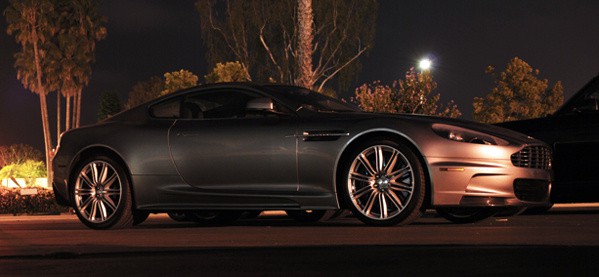
![]()
As the replacement to the DB7, the DB9’s launch took place just shortly after a peak year in sales for Aston Martin. With 1,600 cars sold during 2003, the Ford-owned company needed a winner to keep their burst of success a float. They knew the DB7 it replaced had contributed a major influence in sales growth, and with 7,000 purchased since production began back in 1994, the challenge was certainly clear.
Interesting enough, the coupe built by Ian Callum and Henrick Fisker consists mostly of aluminum. It’s light weight chassis is paired with a 6.0L V12 engine taken directly from the Vanquish. And even though the 450-horsepower engine may seem disappointing at first glance, it’s road performance seemed to prove otherwise.
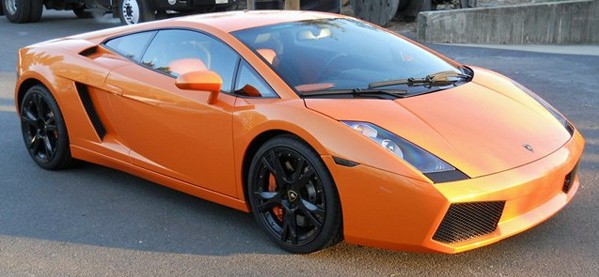
![]()
The first of this ten-year model run came off the assembly line in late 2003, making 2004 the first model year for this iconic design. Lamborghini’s name is assured in the realm of mechanical excellence. It did, however, introduce a car that calls to mind the sleek and predatory lines of a shark—a theme that would be echoed for the entire decade of its production and its many offspring models.
Perhaps the most notable innovation about the Gallardo was the introduction of a hydraulically controlled semi-automatic transmission—so those less proficient with the Standard H-Box gear assembly to enjoy the thrill of driving a Lamborghini.
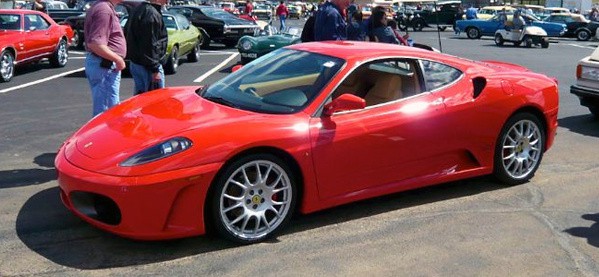
![]()
Produced with as much nostalgia as racecourse pragmatism, the F430 came off the assembly line from 2004 to 2009. While the drag coefficient of the racing model remained the same, recrafing the lines of the frame significantly increased the downward force of this model, enhancing its effective performance on the course.
This was also the first model to depart from the original Dino type engine, which all models had possessed since the 1950s. Rather, the F430 incorporated a 4.3L V8 petrol engine.

![]()
Produced by Maserati from 2007 to present, this year is scheduled to be the last year for this particular incarnation of the company’s line of Grand Touring automobiles. Designed to blend driver experience and enjoyment with the power of performance, the V8 engine and standard transmission also incorporate an automatic gear-box.
Rather than a sedan-style four-seat arrangement, this family of models adopts the sleeker 2×2 design used by several other designers, including Ferrari and Jaguar. This model’s sleek lines are equally desirable in the coupe model or the more spacious 2×2 concepts, and the power at the avail of the driver is not diminished by the extra length to the wheelbase needed to accommodate more seating.
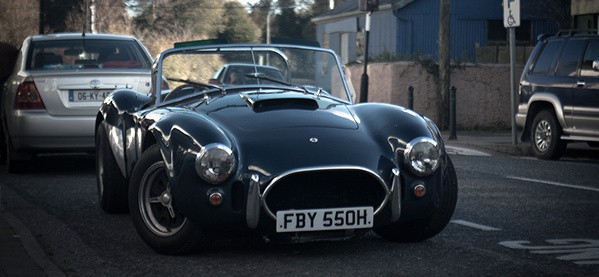
![]()
Also known as a Shelby Cobra, this automobile is the quintessence of cool. While it was only produced from 1962-1967, the sleek lines and refined mechanics of this titan are still prized today. Crafted around a small block V8 with a 2.6 L Ford Zephyr engine, this car is simply a beautiful shell for raw, incredible power. While we associate the beautiful, fluid lines of the body with all that is desirable from a social stance—they’re a means to an end.
The car was built for speed, and the aerodynamics served the purpose of not getting in the way of that end. Today, this museum piece is sought after by aficionados for its grace, its genius of design, and top-notch craftsmanship.
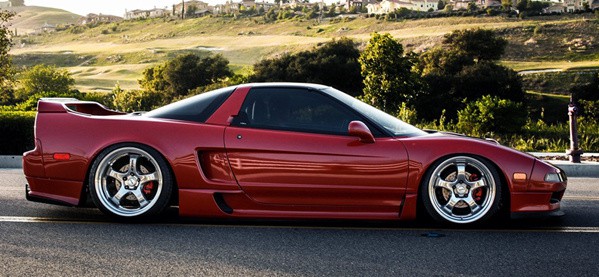
![]()
It’s iconic of the 90s in its less-than-graceful lines—a blockiness oddly reminiscent of early computer graphics. But it was built to be a street-legal racecar, to perform, and that it does. With a 3.2L engine and a six speed manual transmission, this model offers a blend of speed and sensibility.
It gets up to 22 miles per gallon, and isn’t temperamental like many of its purebred cousins if you can’t open it up on the track. While some might enjoy it purely for its looks, it’s aged with grace because that was never the primary focus of design.
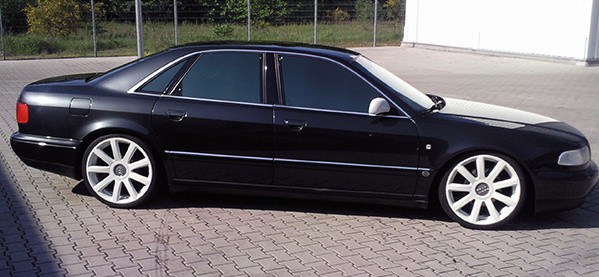
![]()
Audi, another relative of the Volkswagen German automotive tradition, has been putting this panther of a four-door sedan on the streets since 1994. The S8 followed two years later in 1996.
Perhaps, in addition to high-level craftsmanship under the hood and a sleek bodyline that draws the eye, Audi can be credited with being the first to introduce an aluminum chassis in a sedan model. This increases the effective power of the car, and allows for weight distribution to be allocated elsewhere. Say ‘thank you’ to our friends at Audi for consistently providing eye candy with functionality and power.

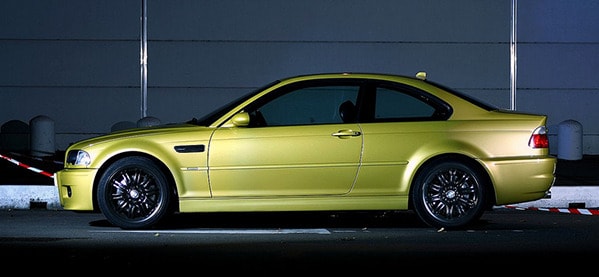
![]()
The M3 is a part of the 3 series designed by BMW—a line that’s been in production since 1985. Only in 2013 did the company decide it was time to move on to the 4 series. The “M” denotes special status to this signature car model series—designs proposed and implemented by an in-house team.
Over the years, this line has served our most vivid conceptualizations of both “good guys” and “bad guys” in cinematic tropes. But everyone wants a piece of the action, so even those shadowy, liminal spy characters will slide behind the wheel of one of these titans of the automotive haut-monde.

![]()
When we see these, the cultural connotation is “Muscle Car.” And that’s precisely what this particular model of Chevrolet’s line was intended to be. Also known generally as a Malibu, the Chevelle 396 SS separated from the pack in 1966 as its own distinct model.
They possessed specific features designed to appeal to the American Heavy Metal car scene—enhanced structural features and amped up horsepower under the hood was matched by swagger marks, such as red-striped tires and specialized trim designed to draw the eye, for it served no other purpose.
While only in production for a couple of years, the SS remains one of the signature trophy cars of the muscle car scene, and a decided fixture in Automotive Americana.



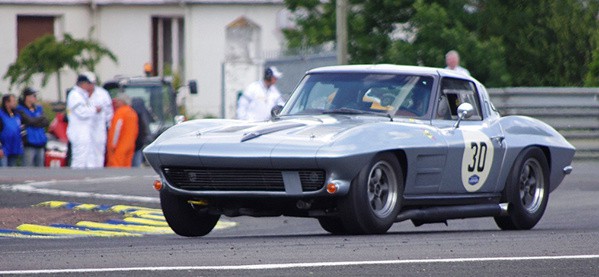

![]()
Manufactured continuously since 1953, with a brief hiatus in 1983, the Corvette is a seven-generation car that has largely set the bar for American sports cars in looks and power. Chevrolet fears that the model line, with its incredible popularity among the Baby Boomer generation, has been branded as a sports car for old men. But any car enthusiast—irrespective of sex or generation—has to acknowledge the beauty and craftsmanship of this particular car breed. Like a fine equine bloodline, it won’t fade away.
The younger set still find beauty in a Stingray—or a 1960s variant of the Corvette. If our parents and grandparents associate the car with other cultural tropes like Magnum P.I., we are making our own connections, and Chevrolet still has a few tricks left in this bag.

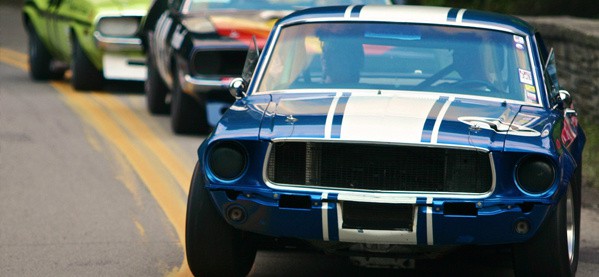

![]()
Another model of long standing, the Mustang is one of the prominent members of an elite American automotive circle. First appearing in 1964, five months prior to the official release of 1965 models, this stallion made its debut at the World’s Fair in New York. While there are any number of excellent cars, with superior racing profiles to the Mustang, it has an appeal and longevity that they do not. It’s one of the few cars that wove its way into the very fabric of Americana—a trope in and of itself.
Don’t let the friendly, sociable image of the hobbyhorse fool you. Sure, your Dad may have taken your Mom out on their first date in this car, but Steve McQueen also drove one, coaxing sinister growls of power from the engine. It’s an all-weather car that has stood the test of time — yes, even the 1980s couldn’t sound its death knell—and continues to be a major fixture in our automotive dreams.

![]()
Rolling off production lines from 1945 to 1980, this workhorse of the light truck world was given a makeover, in name at least, and is now known as the Ram. It was a continuation of the design principals employed by Dodge during the 1930s for civilian vehicles. Because of its success, utility, and toughness it became the template upon which many subsequent trucks were designed.
It’s the grandpa of almost every four-wheel drive pickup truck you see on the road today. Originally, it was designed to compete with Ford models such as the Brushbreaker, exclusively used by the American military. In an immediately post-war economy, with many soldiers returning to civilian life, it offered familiar power and utility they’d become accustomed to in the field.
However, unlike Ford, Dodge marketed its Power Wagon exclusively to non-military markets, tapping a new niche in the automotive world.

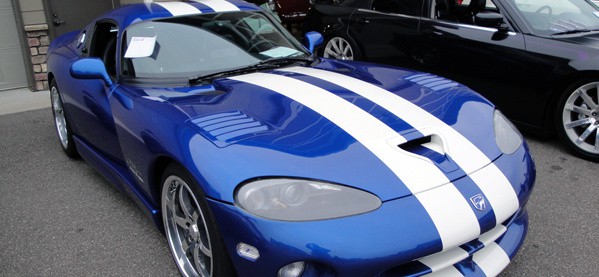
![]()
Produced by the Dodge division of Chrysler from 1992 to 1995, the viper is a signature American sports car of a distinctly modern cast. It incorporates the sleek, aggressive lines that give credit to its name, but the real draw is often under the hood. Sure, it looks cool, but the six speed manual transmission and the 8.0 L engine are the true prizes.
While it was often manufactured with a “governor” placed on the engine to prevent street racing, it is clearly a machine designed for racing performance. It comes not with a roof and windows, but with a cloth and plastic fabrication that can be bolted in place as needed. This reduces weight and drag on the racecourse.
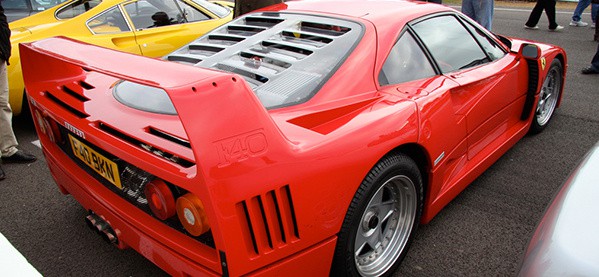

![]()
From 1987 to 1992, Ferrari produced this fast, loud status symbol. It has the distinction of being the last car personally approved by Enzo, and was designed to commemorate the company’s 40th anniversary. As a successor of the GTO, a term borrowed by Pontiac, it enhanced the power of its predecessor with a 2.9L engine and turbo-charge capability.
Additionally, because it also inherited the double-wishbone suspension of the GTO with an extraordinarily low ground clearance, Enzo required that designers include the option to raise the ground clearance of the F40 at consumer need. If you think that Ferrari models don’t pose a great deal of value to ordinary drivers, you should understand that it’s precisely because of people passionate about stretching the limits of what is needed that we know what can be done.
Plus, the F40 does purr so nicely, it’s hard not to love her and recognize her wherever she goes.

![]()
This car was built specifically as an American response to European excellence in long-distance automotive racing. To date, it’s the only all-American built car to take top honors at Le Mans. It also took a host of other late-60s victories in other renowned races.
This car is the result of an international pissing contest between Ford and Ferrari, and incorporates a custom-fit 289, or 4.7-liter engine with a specially designed alloy cylinder head. The name itself is angled specifically at racing—GT stands for Grand Touring and the 40 is the mandated height of the car as measured at the windshield.
The GT40 is a machine built for speed and speed alone.

![]()
Known as “Sport Injected” this was a trim level of the Civic model options introduced in Japan and North America. Civic has been rolling off Honda production lines since 1984, making it one of the longest-running models in our list. The sportier version of this old standby, offers better control and more power—via stiffer sway bars and an 6-speed manual transmission (2006) coupled with a 2.0L engine.
While many of the upgrades made to this trim level since 2006 are focused on function, there are a few improvements to the aesthetics of the car itself, including a red-stitched ball-gear shifter, darker wheels, and clean, edgy lines.

![]()
Originally introduced at a 1995 Tokyo Motor Show as a concept car, the S2000 was produced formally from 1999 to 2009. It is of the roadster class of car and its name reflects its engine displacement volume, after the tradition of roadsters from the 60s.
While it is powered by a four cylinder in-line engine, it also focuses on a rear-wheel drive system with a rigid, lightweight chassis—the driver and passenger functioning as passive agents of downward force. A second suspension system was introduced, replacing the original A1 design, in the early 2000s.

![]()
Manufactured from 1961 to 1975, with a recent renaissance in 2014, this toothsome automobile was an icon on the roads during its production. The reason behind this was largely excellent craftsmanship, good looks, and competitive pricing meant people not only wanted to buy it and drive it, they could afford to do so.
More than 70,000 E Types were sold, and it was ranked first on the Telegraph’s list of 100 most beautiful cars. Released in several models that included a Grand Touring coup, a four-seater with a longer wheelbase, and a two-seater convertible, this gem of design even excited the esteem of some powerful competitors.
Enzo Ferrari declaimed upon its release that it was the most beautiful car ever made.
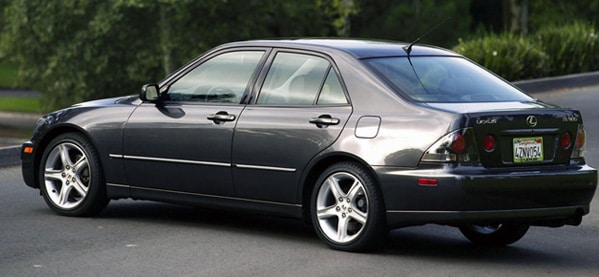

![]()
The IS line has been produced by Lexus since 1998, and is still rolling cars off the assembly line today. In 2000, the IS300 and IS200 were introduced as variations on this theme. They both offer manual and automatic transmission options, but the IS300 has a 3.0L engine with a manual, inline-6 transmission and about 50 additional horsepower.
As well, aesthetic touches were added and user interface technology was cutting edge.
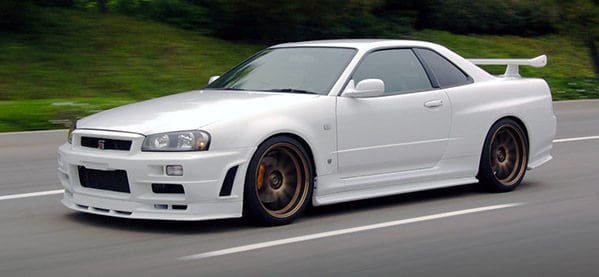

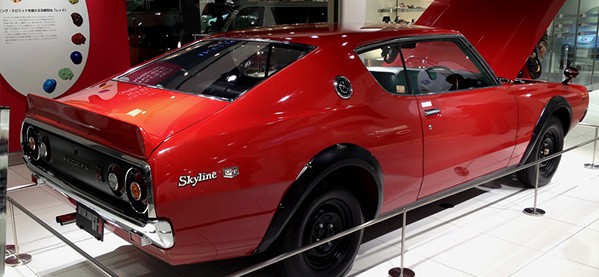
![]()
Known for its racetrack dominance, powerful punch and charming style, Godzilla was the flagship of Nissan’s performance. It wouldn’t come to life until 1969, but the wait was certainly worth it. The Skyline GT-R took home 50 victories with 49 consecutive wins on the Japanese race circuit in the first 4 years. The impressive run would eventually end as production ceased in 1973, however the model carried onwards back in 1989.
3 years later the R34 GT-R (Skyline GT-R V.spec II and M-spec Nür) would mark the end with only 2,000 produced. The notable characters of this favorite were the unique trim stitching colors, a speedometer showcasing 300 km/h (186mph), and signature gold valve covers. It’s finishing crown was a 330 hp engine from the factory, although it was only presented as having 276 hp in ads at the time.



![]()
The Nine-Eleven, or “Neunelf” in German, is an automobile with one of the longest-running production histories. Its form and performance standards are iconic, known to aficionados and laypeople alike. It shares a common ancestor with another beloved icon of the auto world—the VW Bug, and has quite a bit in common with that more humble “Car of the People.”
Not only are both lines originally designed by the same person, but they shared a successful run with the rear engine compartment that relied on air-cooling. Though the Bug was discontinued in 2003, the 911—first unveiled in 1963—continues to command admiration on the city streets and the racecourse alike.
It combines sound mechanical engineering with sleek, beautiful and balanced design elements.
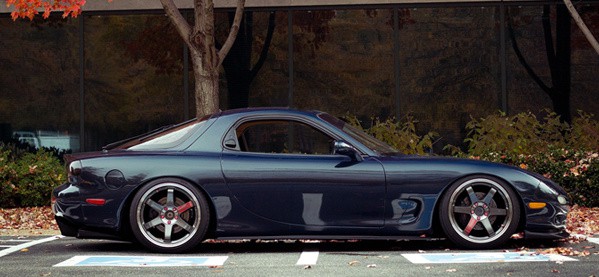

![]()
Also a model with longevity, the RX7 was in production from 1978 to 2002. Don’t be fooled by those “occasional” rear seats, this was always intended to be a sports coupe. Its engine nestles just behind the front axle, sports car fashion.
Interestingly enough, it was originally designed to attract Japanese consumers looking to avoid the tax levied on those driving larger automobiles. But the size appealed even to North American consumers, who drove the lightweight and compact, but pleasantly powerful sports coupe with relish in a post-Gas Crisis America.
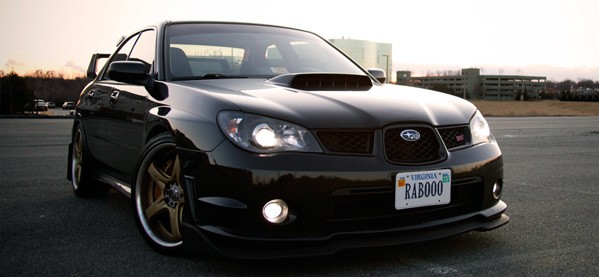

![]()
While the Impreza has been on the market since 1992, the WRX and STI models experienced two major generational stints of production. Subaru has based its success on offering consumers almost innumerable variations on standard theme models—trim levels for everything from cosmetic features to serious handling choices.
These models are no exception. Up until 2005, the WRX models offered a 2.0L engine, after which they were fitted with a 2.5L turbocharged engine.

![]()
Also known as the Celica (Before Toyota stopped using the pre-fix), this is another line of models with longevity. Produced by Toyota from 1978 to 2002, the number of yearly updates to the original concept reflects a dedication to keeping up with what’s new, what’s better, and what’s next.
While the Supra, nee Celica, was a car of longstanding dependability and good looks, in 1994 the designers put forward a model that had serious clout. The Mark IV was an automobile that sported intense torque under the hood and a rounded body style.

![]()
Introduced about five months behind production, the lighter-bodied 190SL was largely a labor of expectation, based on what Daimler-Benz had produced in the past. The engine weight and quality were largely the same, but lighter body materials, such as aluminum were introduced with this model—as opposed to the all-steel body of previous models.
It had a number of design revisions, including a more spacious boot or trunk. The 300SL model had largely sacrificed the trunk space for an over-sized fuel tank. While we’re all for power and performance in our classic cars, practical features such as this are hallmarks of an era’s sensibilities.
They may be cherished pieces of automotive history, but at one time, they were purely functional.

![]()
Introduced in 1952 exclusively as a race car—read engine with a seat on wheels—the 300SL model was brought to the city streets in 1954, and produced until 1963. In a post-war economy, this model was introduced at the New York Auto Show, specifically to appeal to Americans hungry for speed with European style, whereas the company unveiled other models at its Continental show stages. All iterations of this model line remain true to the original “Sport-Leicht” design.
Built on a tubular chassis to save weight—because automobiles were still primarily steel constructions with relatively restricted engine power—the “gull wing” door was born. What began as a necessity, since the chassis would pass through the lower portion of a standard door, became an icon.

![]()
Also known internally as a W126, the 560 is one of a series of “flagship” automobiles produced by Mercedes Benz. One of the most iconic body forms–made popular in movies and by the 1980s pop culture status symbols—this particular line of Mercedes Benz also introduced a number of then-new safety feature, such as the first seat belt pretensioners.
We take these for granted in automobiles today, but in the 1980s, they were still in the process of requiring head rests in all cars to prevent injury and death from cervical impact with the back of classic seats. Overall, with a production run from 1979 to 1991, the W126 has one of the longest runs of any model type in the company.



The 280ZX was the first model ever to be wind-tunnel tested by Nissan during the design phase. Perhaps that’s where its stylish looks came from. It arrived with a larger 2.8L engine and a Bosch Jetronic fuel injection system. However, ever-tightening emissions requirements certainly played a factor to hinder it’s true performance.
With a relatively low production rate, several trim levels of the standard 5-speed were produced, including a 3-speed automatic variant. It achieved a certain low-level celebrity among street racing circles and even served as the pace car in the 1977 Long Beach Grand Prix. While it could never compete with the true racing masters, there’s a certain chintzy mystique about this car.
Like an ugly puppy, it has a loyal following for its inimitable design and features, who love it as much for its under-the-hood attributes.






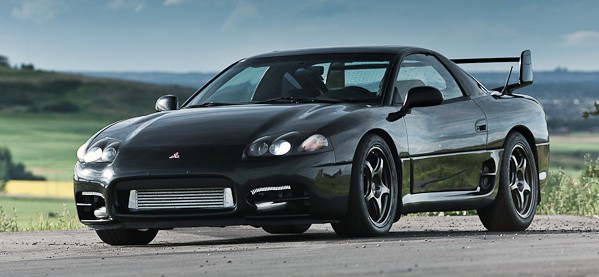
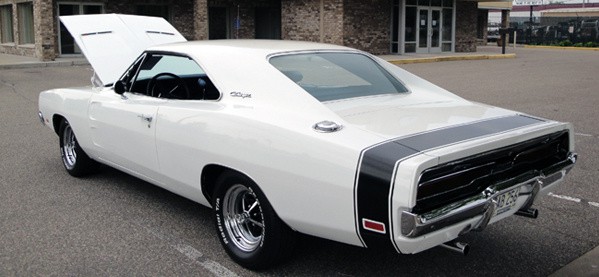

The post 50 Stylish Cars That Aged Like Fine Wine appeared first on Next Luxury.
Thus articles50 Stylish Cars That Aged Like Fine Wine
You now read the article50 Stylish Cars That Aged Like Fine Wine with the link addresshttp://remuneblog.blogspot.com/2017/01/50-stylish-cars-that-aged-like-fine-wine.html
0 komentar:
Posting Komentar